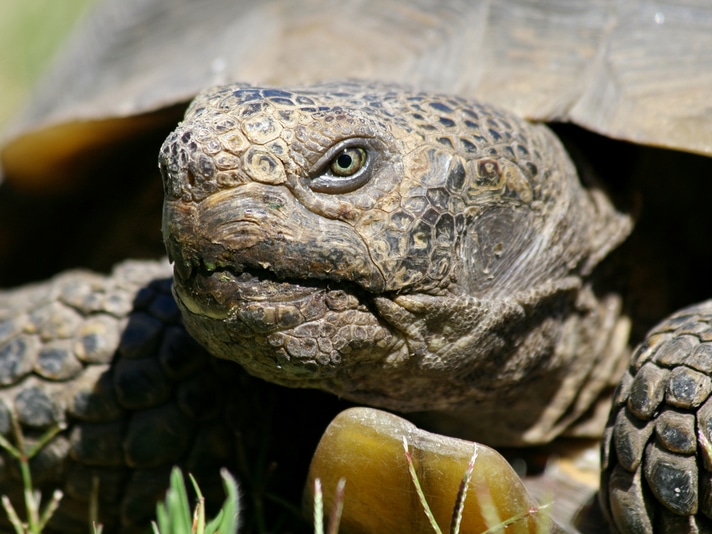Mojave Maxine, the California desert tortoise equivalent of groundhog Punxsutawney Phil, has not yet ended her brumation, but followers of her are eag
Mojave Maxine, the California desert tortoise equivalent of groundhog Punxsutawney Phil, has not yet ended her brumation, but followers of her are eagerly awaiting her emergence, which signals the beginning of spring.
The 45-year-old desert tortoise (Gopherus agassizii), who lives in the Living Desert Zoo and Gardens in Palm Desert, CA is beloved by school children (K-6) in three counties around Palm Desert, who enter a contest each year and try and guess the day in which she emerges from her burrow. She usually emerges around late January to early February.
California Desert Tortoise Granted Temporary Endangered Species Status
Agassiz Desert Tortoise Head Start Program Launches
The contest launched around January 14 and the students from the San Bernardino, Imperial and Riverside counties who correctly predict the date in which maxine emerges will receive a t-shirt for their entire class, and a visit to The Living Desert, according to The Living Desert. You can check out Mojave Maxine’s live webcam here.
The California desert tortoise was granted temporary endangered species status by the California Fish and Game Commission in October of 2020. The tortoise ranges from the Mojave and Sonoran deserts in Southern California and can also be found in Arizona, Nevada, as well as in areas in Mexico. It grows to about 8 to 10 lbs. and eats mostly weeds and leafy weeds in the wild. The desert tortoise is a protected species and it is speculated that more desert tortoises can be found in captivity than in the wild.



